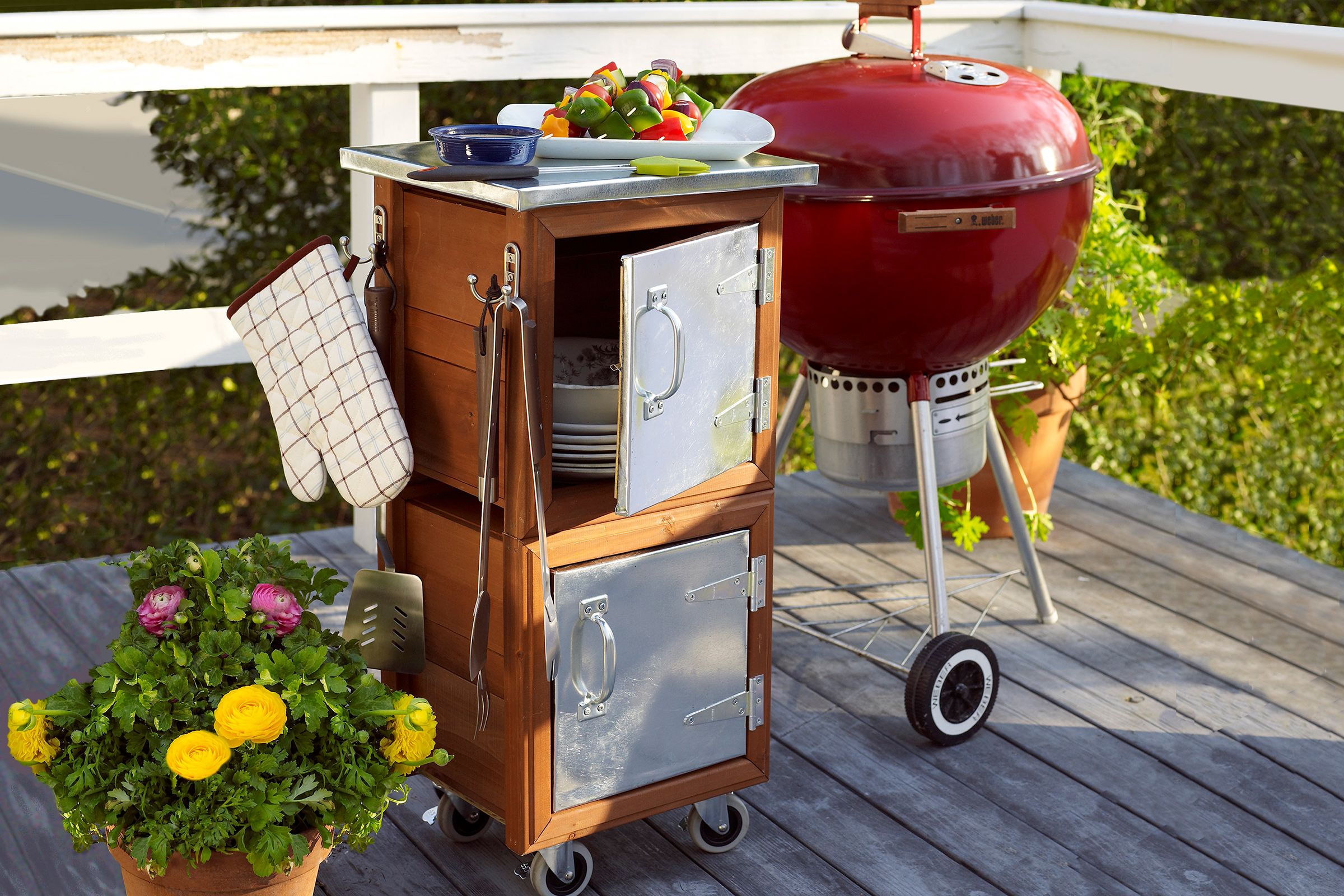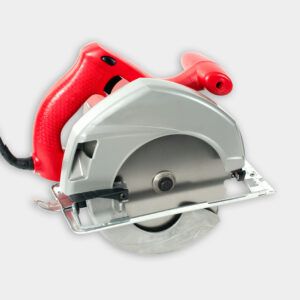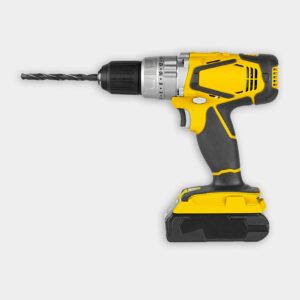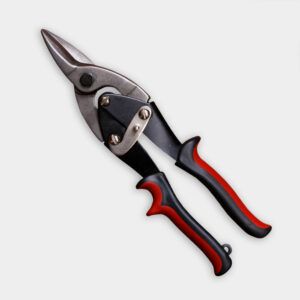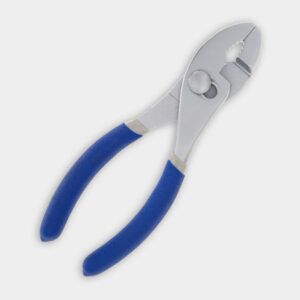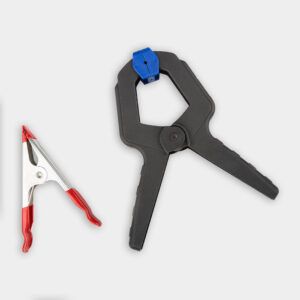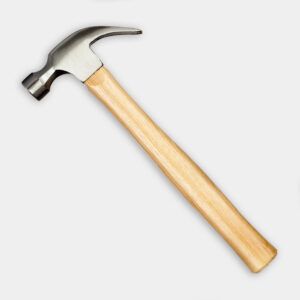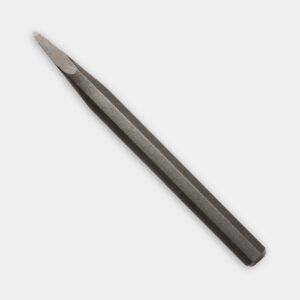Project details
Skill
Cost
Estimated Time
We may be compensated if you purchase through links on our website. Our Reviews Team is committed to delivering honest, objective, and independent reviews on home products and services.
Whether you’re a weekend warrior or a seasoned grill master, having a dedicated space for your grilling tools and accessories can make outdoor cooking more enjoyable. If you want to level up your grilling experience, building your own grill station is a perfect first step.
This DIY grill station project combines functionality with style, creating a perfect addition for any homeowner who’s building a deck or patio. Read on for step-by-step instructions on how to build your own custom grill station.
*Unless otherwise noted, costs in this article reflect an average of prices that our team found from hardware stores like Lowes and Home Depot, and on Amazon.com.
How To Repurpose Planters by Building a Grill Station
With a grill station, instead of sifting through messy drawers to find the perfect pair of tongs, you can keep all your tools within arm’s reach. Creating a custom grilling station doesn’t have to be complicated or expensive. With some creativity and basic DIY skills, you can transform simple planters into a functional grilling station. Following these step-by-step instructions to build a grill station tailored to your needs, and use the image below as a reference for the materials you’ll need.
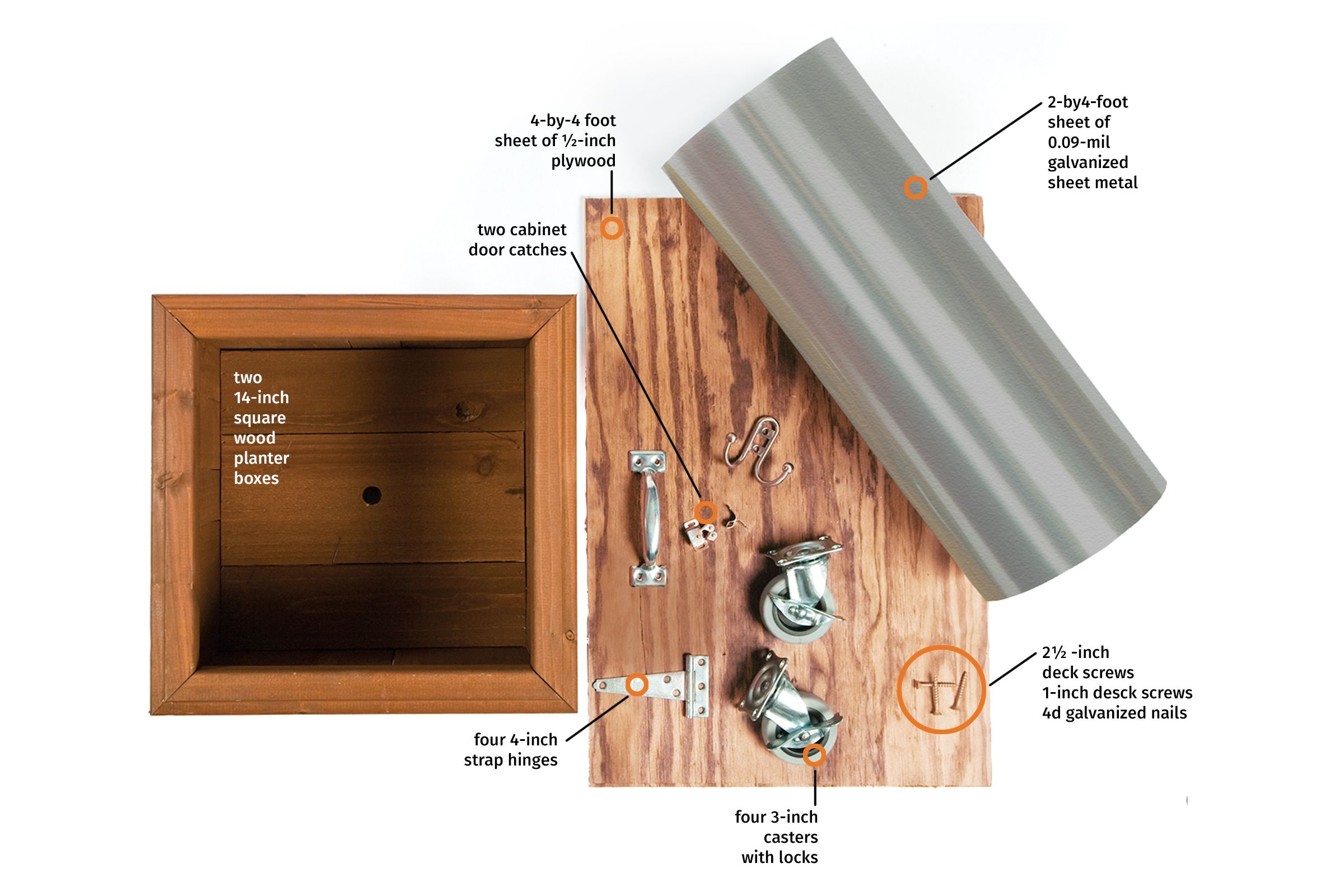
Before You Start Building Your Grilling Station
Before you begin your project, you’ll need to gather some tools and materials. For a full list of the tools you’ll need, see the tool section at the bottom of the article. In terms of materials, this project uses exterior-grade materials to make sure your grill station can stand up to outdoor conditions year after year. For best results, invest in high-quality types of plywood as well as galvanized sheet metal, hinges, and door pulls.
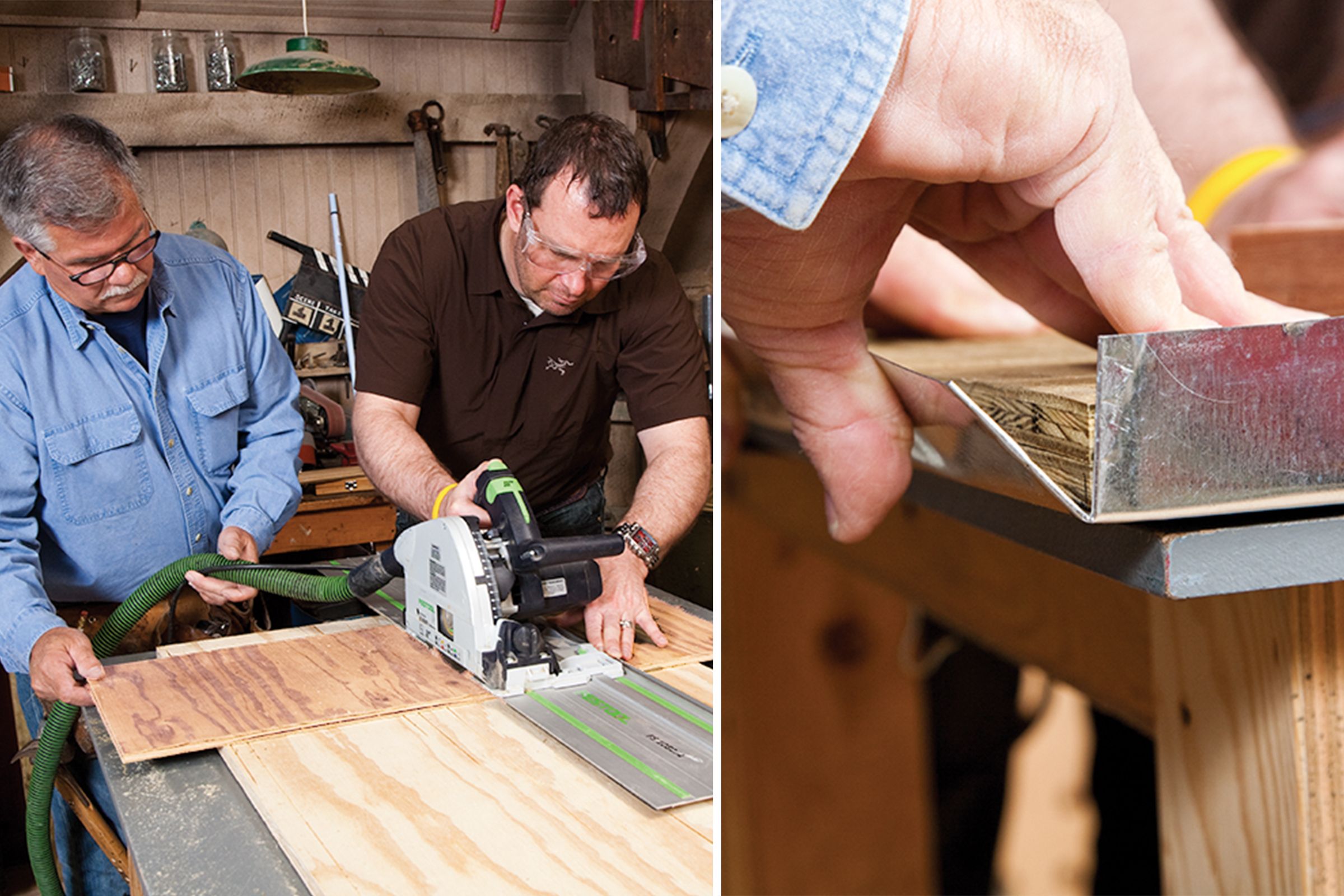
Step 1: Cut the Top and Sides
- Using a circular saw with a guide, cut two pieces of plywood for the top. Make the pieces 1 inch larger all around than the dimensions of one of the planter’s sides.
- Stack the pieces. Using a drill/driver, fasten them together with 1-inch deck screws. Check out our informative guide for more on how to select and use a drill/driver.
- Measure and cut two plywood pieces 3/4 inch smaller than the planter’s opening to make the two doors.
Step 2: Cut the Metal Covers
- Using tin snips, cut three pieces of sheet metal, each 3 inches larger than the top and two doors.
- Center each piece of plywood on the metal and trace it with a marker, extending the lines to the edge of the metal.
- Make a 45-degree relief cut at each corner. Measure 1/2-inch in from the sides of the corner and make two more cuts to remove the excess metal. Using needlenose pliers, fold the corners over and crease them flat.
Step 3: Wrap the Plywood in Metal
- Place the plywood top on the metal, aligning it with the marker outline. Clamp the wood and metal to your work table together, letting one side hang over the edge of the table.
- Bend the metal up against the side of the plywood at the marker line.
Step 4: Crease the Metal Covers
- To get the sheet metal all the way around the plywood, use a wood block and hammer to bend it up and over the wood. Crease it so that it wraps tightly against the wood.
- Remove the clamps, and reposition the plywood and metal as you wrap each side.
- Hammer down any sharp edges. Then, wrap the doors in the same manner.
Step 5: Tack the Metal to the Top
- Using a hammer and nailset, make small dents in the metal at the folded-over edges of the wrapped top.
- Pin the metal to the plywood with 4d finishing nails.
Step 6: Finish the Doors
- Cut two pieces of plywood 1 inch smaller than the doors.
- Using the drill/driver and 1-inch screws, fasten the pieces to the back of the doors to cover the cut-metal edges.
Step 7: Assemble the Base
- Turn the planters on their side. Using a drill/driver and 2-1/2-inch screws, drill pilot holes and then fasten them to each other through the rims.
- Center the metal-wrapped top over the planters and screw it on from underneath.
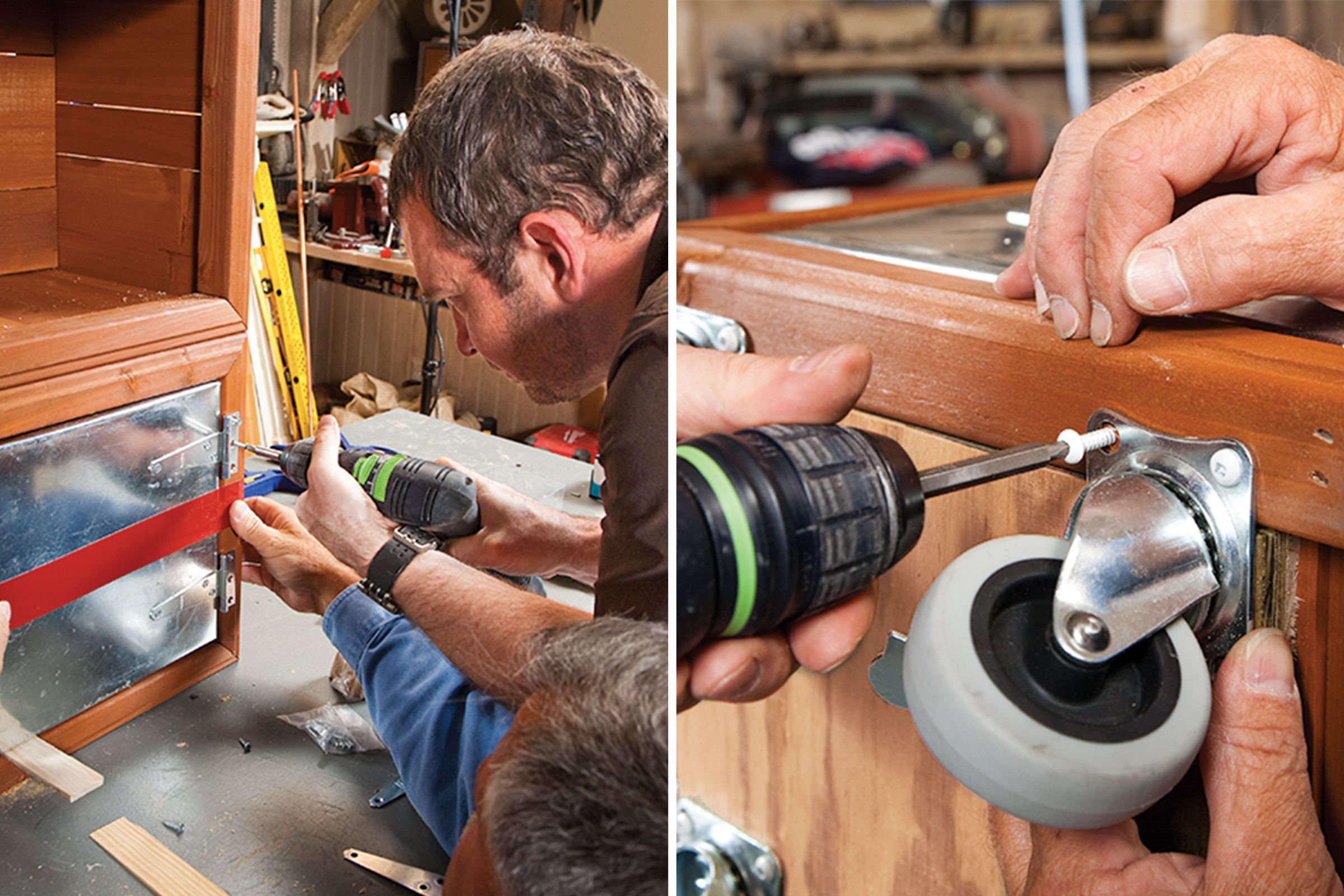
Step 8: Mount the Doors
- Screw the strap hinges to the doors.
- Center the door in its opening and hold it in place with duct tape and shims. then, screw the strap hinges to the planter’s rim. Install cabinet catches on the inside of the door to hold it closed.
- Hang the other door in the same manner.
Step 9: Attach the Hardware
- Using a drill/driver and 1-inch screws, secure the handles to the doors and the hooks to the sides of the cabinet.
- If your planters have a rim, fill the space on the bottom of the cart with a piece of plywood to create a large, flush surface. Shim the plywood if necessary.
- Attach locking casters no more than 1/2 inch in from each corner of the base to ensure your stand won’t roll while you’re grilling. This placement will also keep the cart’s base wide enough to prevent tipping.
Additional Features for Your Grilling Station
To give your grilling station a personal touch, consider adding these upgrades:
- Bottle opener: Mount a bottle opener on the side for convenient beverage access.
- Built-in cutting board: Install a removable cutting board on one side of the station for easy food prep.
- Magnetic strip: Install a magnetic strip to hold metal utensils and keep them within reach.
- Paper towel holder: Add a paper towel holder underneath the top for quick cleanups.
- Spice rack: Attach a small spice rack to keep seasonings close at hand.
You can customize each of these features to suit your specific grilling needs, so get creative. While none of these features are necessary, they’re all easy ways to give your grilling station a bit more flair.
Maintenance Tips for Your DIY Grilling Station
To keep your grilling station in good condition:
- Clean the metal surfaces regularly with a mild soap and water solution.
- Apply a coat of exterior-grade wood sealer to any exposed wood annually.
- Check and tighten any loose screws or hardware as needed.
- Lubricate the caster wheels periodically to maintain smooth movement.
- Store the grilling station under a cover or in a sheltered area when not in use to protect it from the elements.
Routine maintenance will prolong the life of your grilling station, so it’s worth putting in a little bit of time and effort to keep it looking great for years to come.
